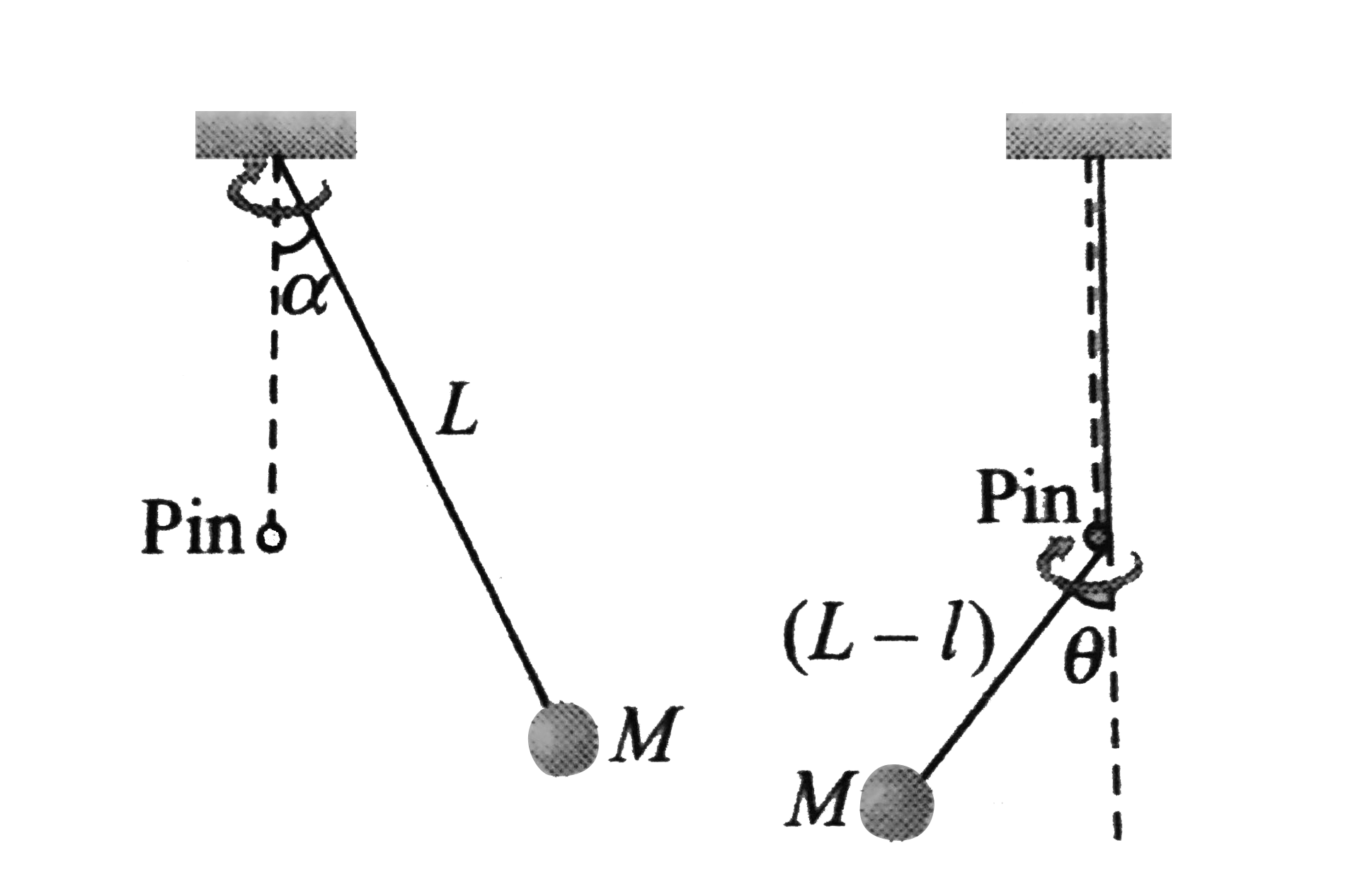Equation of normal to y=tanx at (α,tanα)
The correct Answer is:3
Equation of normal to y=tanx at (α,tanα)
y−tanα=−1sec2α(x−α)
tanα.(sec2α)=(2+π4−α)
tanα(1+tan2α)=(2+π4−α)
α=π4
⇒
Topper's Solved these Questions
- TEST PAPERBook:RESONANCE ENGLISHChapter:TEST PAPERExercise:PHYSICS
Explore 14 Videos
- TEST PAPERBook:RESONANCE ENGLISHChapter:TEST PAPERExercise:CHEMISTRY
Explore 1 Video
- SEQUENCE & SERIES Book:RESONANCE ENGLISHChapter:SEQUENCE & SERIES Exercise:EXERCISE -2 (PART-II : PREVIOUSLY ASKED QUESTION OF RMO)
Explore 3 Videos
- TEST PAPERSBook:RESONANCE ENGLISHChapter:TEST PAPERSExercise:MATHEMATICS
Explore 257 Videos
Similar Questions
A simple pendulum consisting of a mass M attached to a string of length L is released from rest at an angle α. A pin is located at a distance l below the pivot point. When the pendulum swings down, the string hits the pin as shown in figure. The maximum angle θ which the string makes with the vertical after hitting the pin is

View SolutionAn aqueous solution of borax is
View SolutionThree nonzero real numbers a,b,c are said to be in harmonic progression if 1a+1c=2b. Find the three- term harmonic progressions a,b,c of strictly increasing positive integers in which a=20andb divides c.
View SolutionThe least positive vlaue of the parameter 'a' for which there exist atleast one line that is tangent to the graph of the curve y=x3−ax, at one point and normal to the graph at another point is pq, where p and q ar relatively prime positive integers. Find product pq.
View SolutionIf tan x = tan y cos2 alpha prove that: tan (yx) = (tan ^ (2) alpha * sin2y) / (1 + tan ^ (2) alpha * cos2y)
View Solutionint(tan x-tan alpha)/(tan x+tan alpha)dx
View Solutiontan alpha*tan(60^(@)-alpha)*tan(60^(@)+alpha)=tan3 alpha
View Solution(x tan alpha+y cot alpha)(x cot alpha+y tan alpha)-4xy cos^(2)2 alpha=
View SolutionIf α+β=θandtanαtanβ=xy, prove that sin(α−β)=x−yx+ysinθ
View SolutionIf a chord joining P(asecθ,atanθ),Q(asecα,atanα) on the hyperbola x2−y2=a2 is the normal at P, then tanα=
View Solutiontan alpha,tan beta,tanγ are roots of the equation au^(3)+(2a-x)u+y=0 for fixed x and y .and tan alpha +tan beta=h then ah^(3)+(2a-x)h=
View Solution∫tanx−tanαtanx+tanαdx
View Solutiontanα+tanβtan(α+β)+tanα−tanβtan(α−β) =
View SolutionIf sin(x+3α)=,3sin(α−x) then
(A) tanx,=tanα
(B) tanx,=tan2α
(C) tanx,=tan3α
(D) tanx,=3tanα
View SolutionIf xsecα+ytanα=xsecβ+ytanβ=a, then secα⋅secβ=
View Solution
